Alberto Santos Dumont
was born July 20, 1873, in the village of Cabangu, State
of Minas Gerais, Brazil. At the age of 18, Santos Dumont
was sent by his father to Paris where he devoted his time
to the study of chemistry, physics, astronomy and
mechanics. His first spherical balloon,
"Brasil," ordered from Maison LaChambre, with
the capacity of 113 cubic meters, capable of lifting a
ballast of 114.4 lbs, and having in its lower part a
wicker basket, made its first ascension in Paris on July
4th, 1898. His second balloon, "America," had
500 cubic meters of capacity and gave Santos Dumont the
Aero Club of Paris’ award to study the atmospheric
currents. Twelve balloons had participated in this
competition but "America" reached a greater
altitude and remained in the air for 22 hours.
Putting aside
the aerostation, he began to devote himself towards
solving the problem of steering the balloons. His first
steered balloon, "Santos Dumont no. 1,"
ascended on September 18th 1898. Balloons "Santos
Dumont no. 2," which wasn’t successful, and
"Santos Dumont no. 3," built at the Vaugurand
workshop, followed. "Santos Dumont no. 3"
ascended on November 13th, 1890. It circled a few times
the Eiffel Tower, headed to the Park and from there
finally headed towards the Bagatelle field where it
landed flawlessly.
In view of the
success of no. 3 balloon, the Aero Club of France was
founded and Mr. Deutsch de La Meurt instituted the
"Deutsch Prize" to be awarded to the balloonist
who, taking off from Saint-Cloud, circumnavigated the
Eiffel Tower and returned to the starting point in less
than thirty minutes. This prize was conquered by Santos
Dumont on October 19th, 1901, with dirigible no. 6.
Besides this prize, Santos Dumont received the sum of
100,000 francs which he distributed in equal parts to his
workers and the beggars of Paris.
Dirigibles nos.
7, 8, and 9 followed. With the latter, on July 4th, 1903,
Santos Dumont maneuvered over Longchamps, where a
military parade was being held in commemoration of
Bastille capture.
Once he solved
the problem of steering the lighter-than-air vehicle,
Santos Dumont devoted himself to the heavier-than-air
problem. Aboard the 14-BIS he made his first
unsuccessfull attempt in July, 1906. On September 7th,
the 14-BIS wheels left the ground for a moment; on the
13th it could reach the height of one meter; on October
23rd, the airplane flew 50 meters. It was on November
12th, 1906 that Santos Dumont’s airplane, the
14-BIS, flew a distance of 220 meters at the height of 6
meters and at the speed of 37,358 km/h. Thanks to this
flight the "Archdecon Prize" was awarded to
Santos Dumont, who had thus, solved the problem of making
a heavier-than-air machine take off by its own means.
Santos Dumont
died on July 23rd, 1932, in Brazil. According to the law
no. 165 of December 5th, 1947, enacted by the National
Congress of Brazil and sanctioned by His Excellency
President Eurico Gaspar Dutra, Alberto Santos Dumont was
permanently listed in the Brazilian Air Ministry Almanac
with the rank of Lieutenant Brigadier. He was promoted to
the Honorary rank of Air Marshall on September 22, 1955,
according to the law no. 3636, and is permanently listed
in the Brazilian Air Ministry Almanac.
In
October of 1900, Santos-Dumont’s dirigible made the
first flight around the Eiffel Tower.
 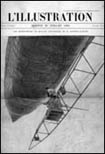 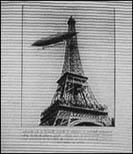
MEMORABILIA
OF SANTOS DUMONT
Among the Memorabilia of Santos Dumont being presented by
Mrs. Machado to the Smithsonian Institution, there are 2
models of the 12-BIS airplane.
Following is
the description of the 14-BIS as taken from the Official
List of Records of the "Aero Club of France": Span;
40 feet, Length; 33 feet, Surface; 860 sq.
feet, Weight; 352 pounds, Engine;
Antoinette, 24 HP. First official flight of Santos-Dumont
in a heavier-than-air machine taking off by its own
means: 7 meters of distance at 70 cm. above the ground in
Bagatelle (Paris) on Sept., 13, 1906; On October 23,
1906, another official flight, covering 60 meters (200
ft.). On November 12, 1906, in Bagatelle, Santos-Dumont
covered 220 meters (770 ft.) in 21 seconds and 2/3. This
flight established the first world aviation record.
Blueprint of
Santos-Dumont’s Demoiselle.
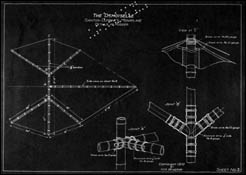
"Santos-Dumont
No. 9"
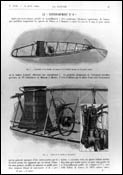
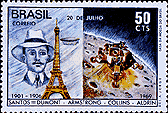
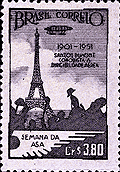
|

